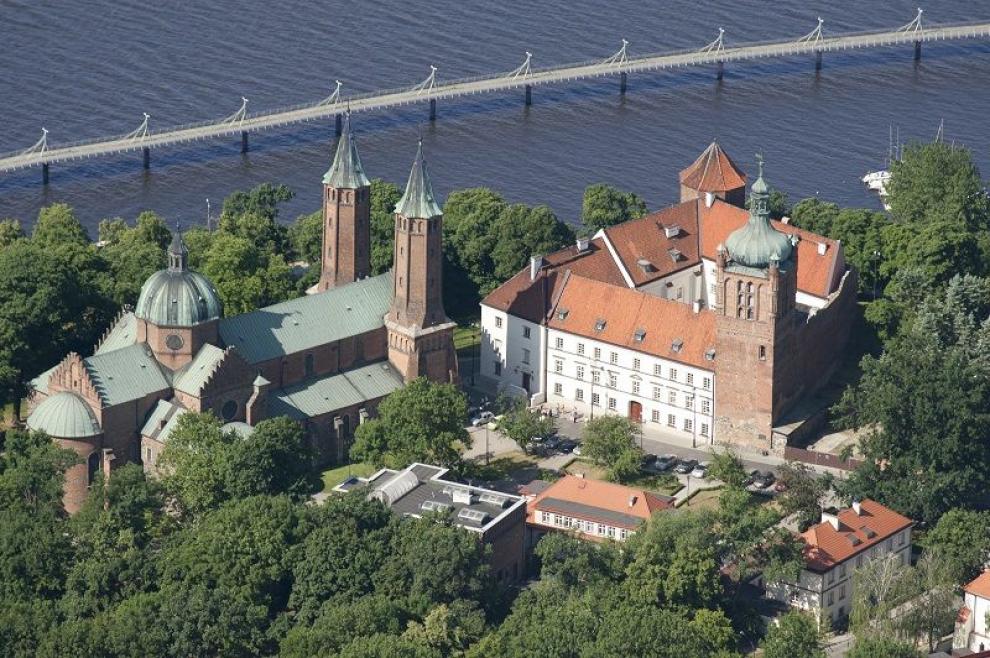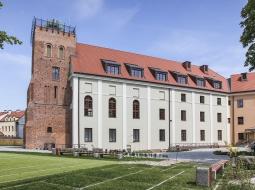Thessaloniki gets ready for its metro launch in November
The underground rapid transit lines have been under construction for almost two decades due to various project delays
 TheMayor.EU logo
TheMayor.EU logo 
The ancestors of today’s inhabitants of Plock erected their castle on the bank of the Vistula river in the 10th century, believing that the place would guarantee them better defence. This strategic location was at a crossroads of shipping routes and has been inhabited for centuries.
In the Middle Ages, Płock was one of the most important administrative and cultural centres in Poland. For a decade between 1037 and 1047, it was capital of the independent Mazovian state of Miecław. Moreover, between 1079 and 1138, during the reign of Władysław I Herman and Bolesław III Wrymouth, Plock was the capital of Poland.
Płock received city rights in 1237.
The royal city and capital of the Plock voivodeship lived its golden age in the 16th century. This was not meant to last long, however, as it suffered plague, fires and war with Sweden over the next two centuries.
At the end of the 18th century Plock was rebuilt as a new town with many German immigrants. Later being annexed by Prussia, included into the Duchy of Warsaw and integrated into the Congress Poland (or Kingdom of Poland) in 1815, it was finally entirely annexed by the Russian Empire.
During WWI the city suffered German occupation (1915-18) and in 1920 showed heroic bravery during the Polish-Soviet war. Following the German invasion during the Second world war, Plock was renamed Schröttersburg.
In the Royal Chapel of the Cathedral Basilica, there is a sarcophagus with the remains of the then rulers: Władysław I Herman and Bolesław III Krzywousty. The castle was once the seat of the Mazovian dukes.
Source: City of Plock
Płock is a city with poviat status, located in the centre of Poland, about 110 km west of Warsaw, in the Masovian Voivodeship, on the border between the Płock Basin and the Dobrzyński Lake District.
It has a population of 120 000 inhabitants (as of 31 Dec 2018, GUS) and an area of 88.06 square kilometres.
Plock is an academic city with four universities (a branch of the Warsaw University of Technology, the State Higher Vocational School, the Paweł Włodkowic University, the Higher Theological Seminary).
Płock is also a strong economic centre with a diverse industry structure, oriented on innovation, modern technologies and business success. However, the fuel and energy and chemical industries dominate.
The Polish concern ORLEN SA is located here, as well as PERN S.A, Basell Orlen Polyolefins in the chemical industry.
The food (Dr Oetker), machinery (New Holland), clothing (Levi Strauss), shipbuilding (Centromost River Shipyard) and construction (BudMat) industries are developing well.

Among other Vistula towns, Płock is distinguished by an exceptionally picturesque location on a steep 52-meter escarpment, known as the Tumskie Hill. The panorama of Płock from the side of the Vistula is captivating with its beauty.
Płock is a perfect weekend destination, full of charm and historical curiosities, valuable monuments and attractive sites. Cathedral Basilica, treasury at the Diocesan Museum, collection of Art Nouveau at the Mazovian Museum, the recently opened Museum of Masovian Jews, the oldest school in Poland - Małachowianka with the carefully restored former Collegiate Church of St. Michał and the Jesuit College, the Old Market Square with the town hall are certainly must-sees.
Old Market Square 1, Plock